North Vietnam, Tru’ung Sisters, March 14th, 1959, Michel Nr. 95-96; Shortly after the currency devaluation on March 1st, 1959 postal authorities issued new stamps on March 14th, 1959 in the new currency commemorating the Tru’ung Sisters. The Tru’ung Sisters were early revolutionaries that instigated a revolt against the Chinese occupiers in the 1st Century A.D. and hence became historical role models for thawing off the chains of colonialism. The old Dong was devalued 1,000:1 which indicated that the two nominals 5 xu and 8 xu respectively represented 50D and 80D in the old currency. So, these were the first stamps issued in new currency after the devaluation. The stamps were perforated 11:0 and they come in two versions, horizontally and vertically ribbed paper. While the stamps were not gummed the ribbing was probably applied to avoid any curving of the sheets in the humid climate of the country. Depending on how the sheets were fed into the machine the ribbing shows either a horizontal or vertical pattern of lines. The ribbing can only be seen on the back of the stamps by close visual examination. Michel price both versions the same.
Here is the official stamp bulletin that was released upon issuance of this set.
Here is a set with horizontal ribbing
Here is a mint set with vertical ribbing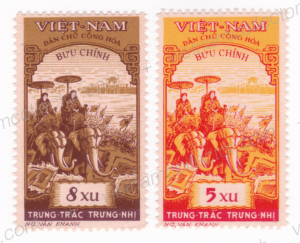
Cancelled to order set with vertical ribbing:
Blocks of four set with vertical ribbing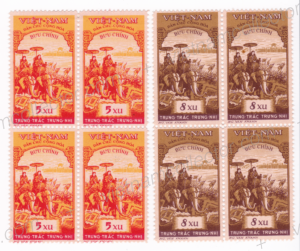
Perforation Errors do occur but are pretty rare. Here is a pair of the 8 xu value which is vertically imperforated on the left and in-between the two stamps. This error occurred when the peroration comb applied to produce the vertical perforation failed to strike. This error can occur if the line perforation method is used as was in this case.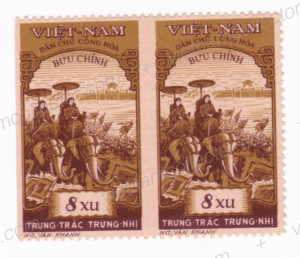
Also some striking color errors are known for this issue that are all ex Klewitz and not yet catalogued. Here is the 5 xu value in the colors yellow/red instead of orange/red: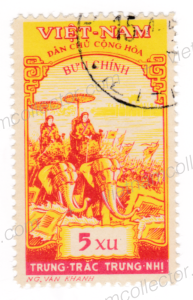
Here are two color errors for the 8 xu value. The first is brown-olive/brown instead of yellow-brown/brown and the second one is olive-green/brown. This stamp was printed in two color stages. While the red on the 5 xu value and the dark brown on the 8 xu value remained apparently constant the paint mixture of the second stage color did vary in some print runs. This was either a function of replacement paint use (as the original paint was not available in sufficient quantities) or by guiding too little of the second stage paint to the printing cylinder. 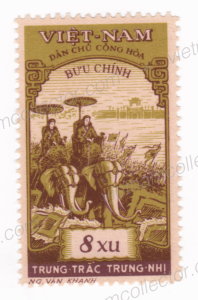
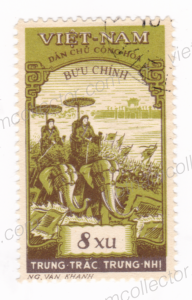
Postally used letters with these stamps are pretty scarce. Here is an example bearing an interesting mixed currency franking to the well known Vietnam philatelist Theo Klewitz from April 1959, so shortly after the currency reform. It carries 70 Old Dong or 0.7 New Dong plus new currency stamps of 25 Xu for a total franking of 32 Xu.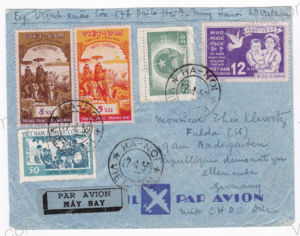
Mixed currency franking featuring one of the old 150D Jade Tempel stamp that was devalued by 1,000:1 on March 1st, 1959 so was only worth 15xu at the time of mailing. Together with the 5xu Sisters Tru’ng stamp the overall postage amounted to 20xu, which was the correct postage as of April 15th, 1959 to fellow socialist countries. Full contents preserved.
Mixed franking on an air-mail envelope sent from Hanoi to Kiel, West Germany. West Germany was still a rare destination in the early 1960’s. The letter is franked with two of the 30xu People Dance stamps plus one of the 5xu Sister tru’ng stamps for an overall postage of 65xu. The standard international letter rate to Western countries increased to 50xu on March 1st, 1960 which indicates that this letter was probably heavier than the standard 20g weight allowance.
Another letter ex Klewitz franked with a mixed franking of all new currency nominals featuring the 5 xu value of the Sisters Tru’ung issue and mailed in 1964.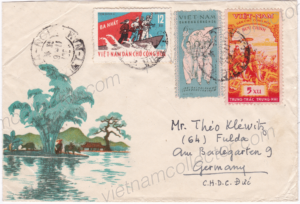
Here are rather late usage from 1974 (ex Klewitz) with one value of the 5 xu stamp. This cover nicely demonstrates that postage rates in Vietnam stayed rather stable over decades. Rare express usage paying 26 xu with Fulda arrival cancel on reverse.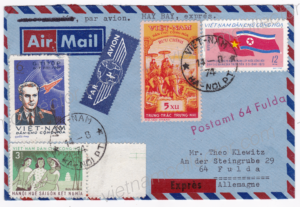
Registered air mail latter sent in December of 1981 to Klewitz. It shows six pairs of the lotus flower stamp in the rare post master perforations: 9.5, 11, 14, 15, 5-6 and 9.5. It also carries two shads of the single rose stamp. Late use of the 5 xu Tru’ng stamp. The overall postage amounted to 8.80 Dong (including the 3 Dong free frank on front). Unusual red cancel. Green Fulda custom cachet on front.
Rare registered express mail letter sent from Ho Chi Minh City to Klewitz in September of 1980. The letter carries the entire perforated Intercosmo set the Tru’ng Sister set stamps for an overall postage of 4.45 Dong. The zero money red free frank was required to produce the R-label as it came out of the same machine. Green Fulda custom cachet on front.
Interesting mixed currency franking featuring one of the Cam Phase stamps in 150 Old Dong, the 12 Year Republic 20Old Dong and two of the Tru’ng Sister stamps in 13 new xu. The old Dong was devalued by 1,000:1 so the two old stamps were only worth 17xu. So, there overall franking amounted 30xu which represented the surface letter rate to China.
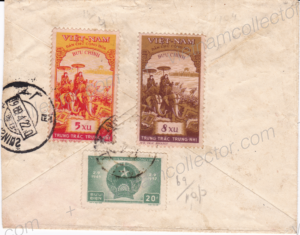
Another stamp bulletin from So Xuan Nhap Chau Sach Bac to well known philatelist Theo Klwitz in West Germany franked with two of the Defense if Country Service stamps along with the 5xu Sisters Tru’ng stamp. The bulletin announced the Sisters Tru’ng and the brown war invalid stamp of 1959. The Defense of Country stamp had been devalued by 1,000:1 on March 1st, 1959 so were only worth 35xu new Xu upon mailing of the bulletin. The overall postage amounted to 40xu.
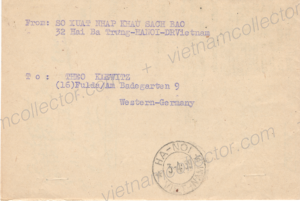
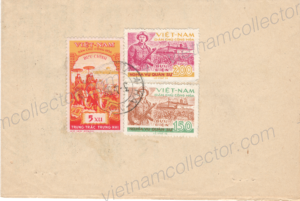
Interesting mixed currency franking of two stamps in Old Dong and four stamps in New Dong. The 200D old stamps were devalued by 1,000:1 on March 1st, 1959, so were only worth 20xu in November of 1959. The overall franking hence amounted to 30xu which represented the standard surface letter rate since March of 1957. England was still a rare destination in the early 60’s.
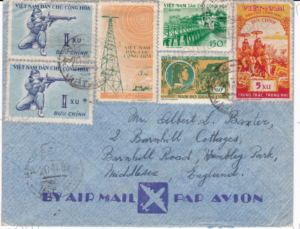
Registration Nr. 100200

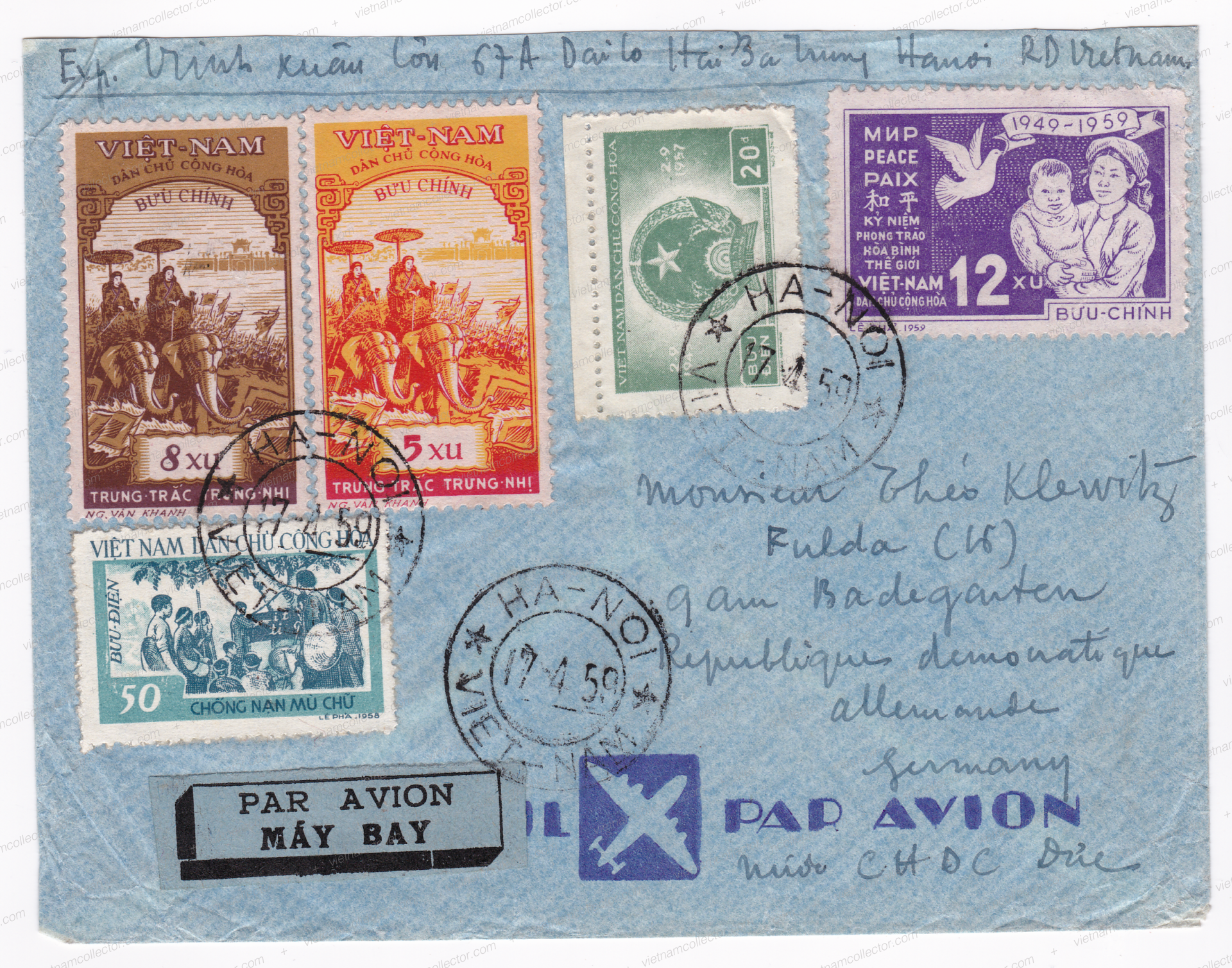
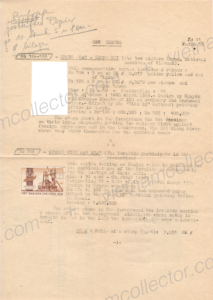
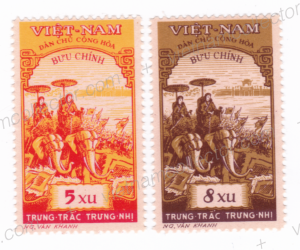
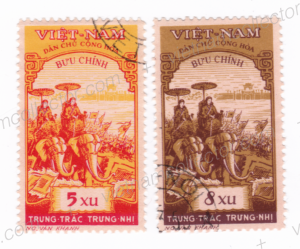
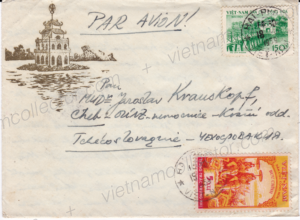
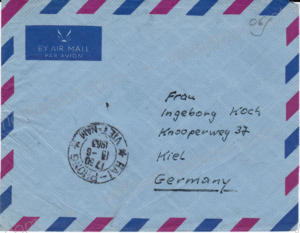
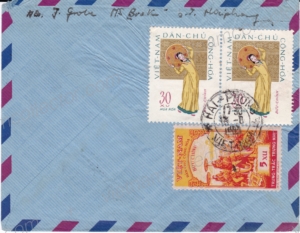
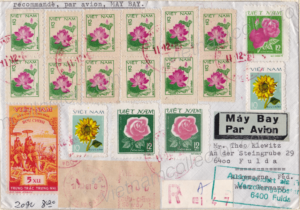
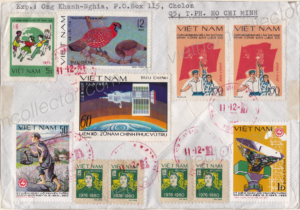
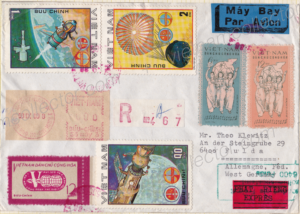
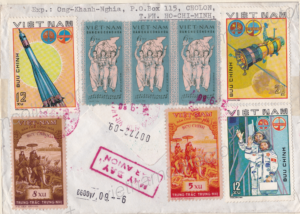
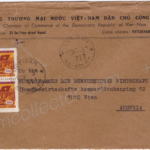
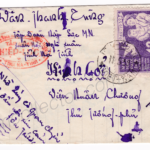
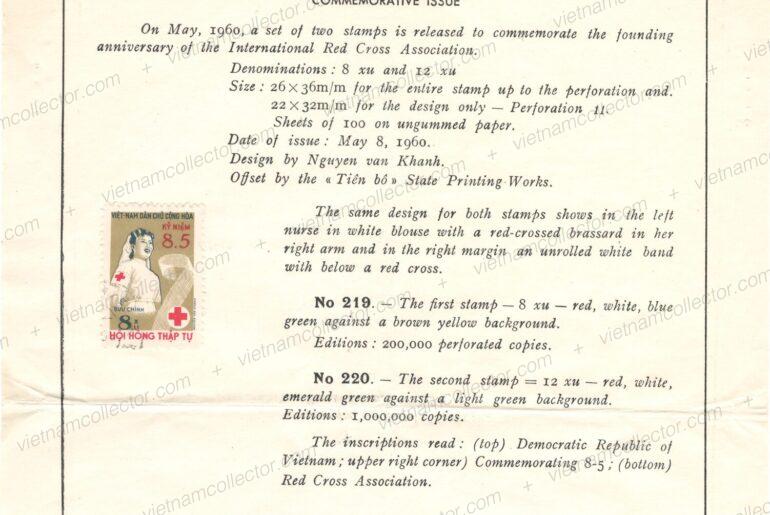
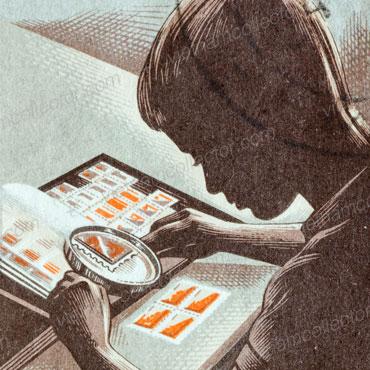
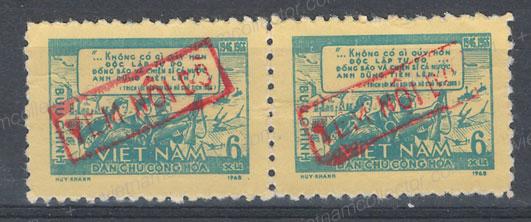
Comments are closed.